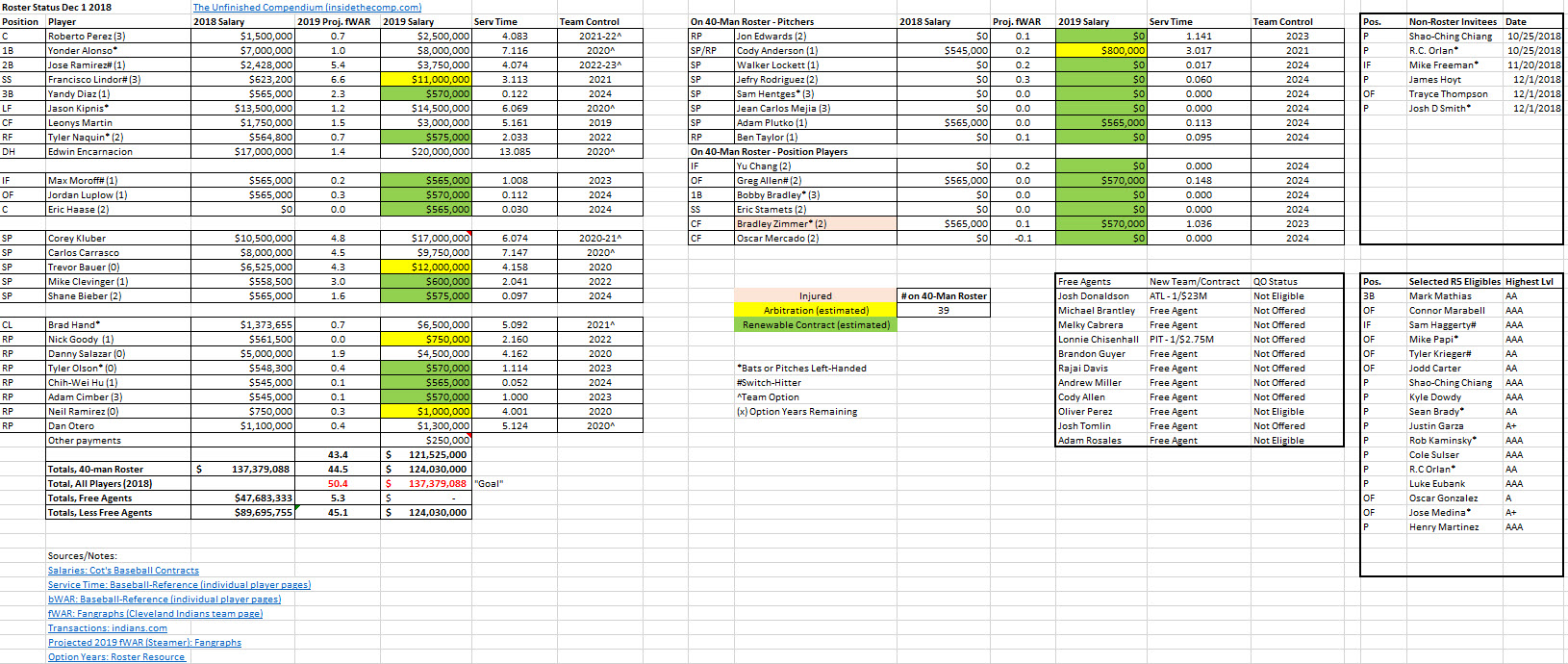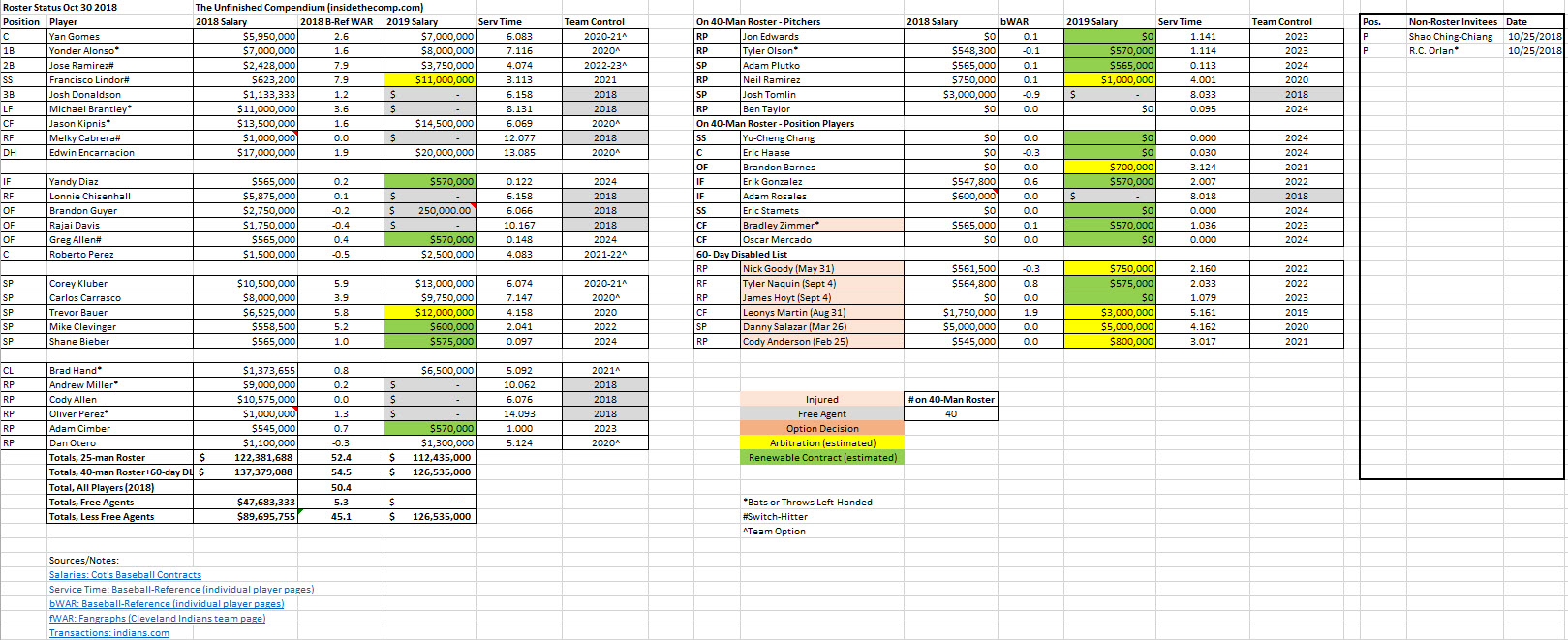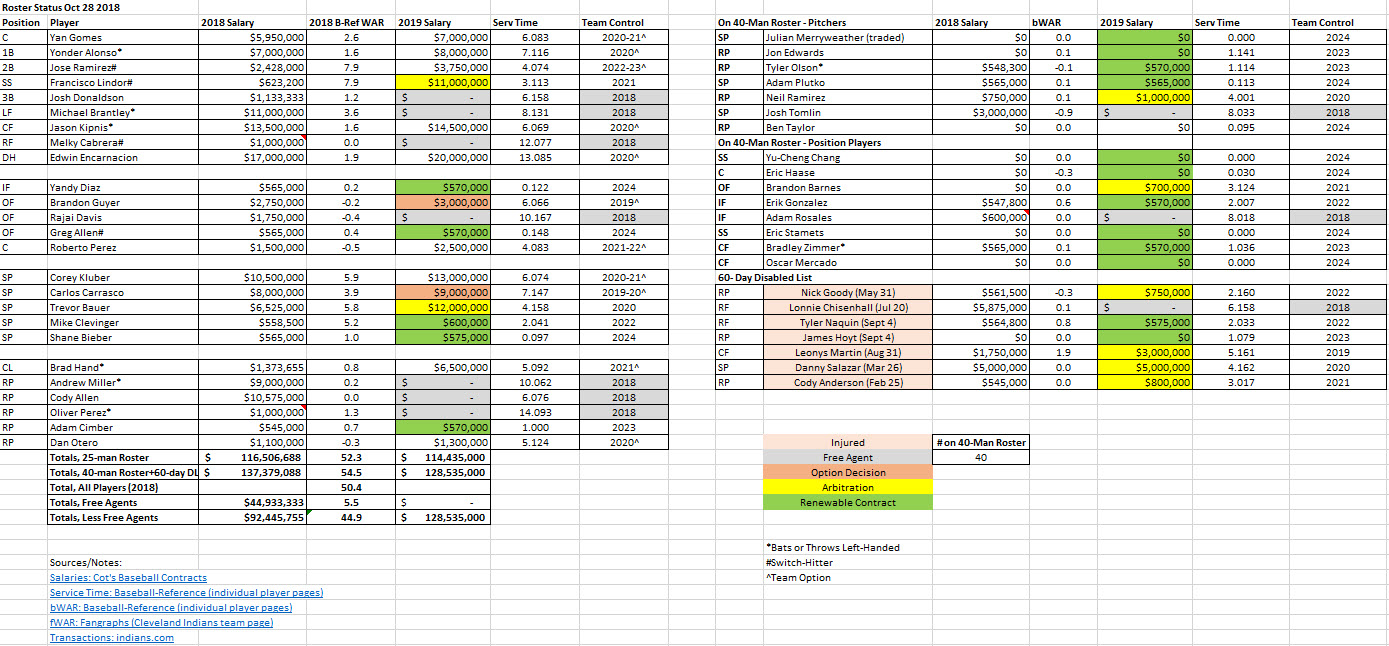On Friday night, after several weeks of rumors, the Indians traded long-time starting catcher Yan Gomes. Before I start rambling about what I think about the trade, both in isolation and in the broader context of the off-season, it would be wise to lay out the details:
The Indians traded Yan Gomes to the Washington Nationals for RHP Jefry Rodriguez, OF Daniel Johnson, and a PTBNL (by April 15, 2019).
- Yan Gomes will be entering his Age 31 season, and is set to make just over $7M in 2019. There are two team options in 2020 and 2021 worth $9M and $11M respectively. He’s coming off his best season (by far) since 2014, and is projected by Steamer to be worth 1.2 fWAR, though that is based a partial season (281 PA). If you project Gomes to have what for a catcher would be a full season (450 PA), that gets bumped up to 1.9 fWAR.
- Jefry Rodriguez made his MLB debut in 2018, starting in 8 of his 14 appearances. He has a mid-to-upper 90s fastball along with a curve and changeup, but has struggled with mechanics, and because of that has trouble staying in the strike zone. He profiles as a reliever. He has two option years remaining.
- Daniel Johnson spent almost the entire 2018 season in AA. His tools are very highly rated, especially his arm (there was some thought from MLB scouts that he could be drafted as a pitcher), but also some serious flaws, namely his ability to make contact. Also, if he does crack the big leagues, he’ll likely need to be platooned, as he’s struggled against left-handed pitching. He is not eligible for this month’s Rule 5 Draft, so he did not need protected on the 40-man roster
- The Indians did not include any cash in the deal.
I think it very unlikely that Johnson will help the Indians this year, and Rodriguez if anything would serve as a taxi squad reliever along with many of the other newcomers added over the past 6 weeks. Johnson is by a considerable measure has the highest upside of the two, but as you can guess from the mini-scouting reports, I don’t have much confidence that either is going to stick in the majors. There is the PTBNL, but it’s kind of pointless to speculate about that right now.
The Indians also seemed to have a favorite market to trade Gomes, with the Indians being publicly linked to both the Dodgers and the Mets. Gomes had one of the better offensive seasons as a catcher (though the position as a whole had a down year), and as his defensive skill set has remained strong, it’s no wonder that several teams were interested. Chris Antonetti said as much afterwards:
“The catching position was an interesting one,” Antonetti said. “There were a number of teams that were seeking to upgrade their alternatives at catcher, and there were also a number of alternatives on the market in both free agency and trades. That was the dynamic we were navigating at the start of the offseason. It got to a point on a deal that we thought made sense for us.”
I note a tone of slight disappointment in this quote, and for good reason. The Indians didn’t get a great return for Gomes, whether you want to measure that in 2019 production or future production. Johnson has a high upside, but a huge amount of risk, certainly not the type of prospect you’d expect for a veteran catcher who was probably the best value at his position in either free agency or trade. The Indians do save $7.08M, but they aren’t going to be able to make up the lost production in free agency, not the way production is valued now ($7-8M per win). Perhaps the Indians are not optimistic about Gomes’ future at the plate, as his fine season at the plate was driven largely by power at the expense of contact, as well as 2018 being balanced out by bad to awful campaigns in 2015, 2016, and 2017. Roberto Perez, who now presumably will be the everyday catcher, isn’t that far off in terms of projected value (1.6 fWAR), but he’s coming off a brutal season at the plate.
Given all of the above, I don’t think you can come to any conclusion other than the Gomes deal being largely a salary dump. The Indians are trying to navigate a very tricky offseason in which they need to pare payroll in some areas in order to improve in others. The catching position is apparently one of the areas that they feel they can subtract from without it hurting the team that much. Based on this trade, the Indians now have a bit more payroll room to maneuver, having a projected payroll roughly $13M below their 2018 payroll (assuming of course that the 2019 budget remains neutral). That’s not going to be enough to improve the roster via free agency given that they in a perfect world would like to add a corner outfielder as well as at least one 7th/8th inning reliever.
For a fan that pays superficial attention to the comings and goings of the team, this trade would seem to portend an unwillingness to contend next season, and I can’t really blame that attitude right now. The team is worse off now (for 2019 contention) than they were a couple days ago. But there are still many key moves yet to be made, so please, hold your lamentations for now. If next year’s Opening Day payroll is considerably lower than this year’s, and if the overall talent level is lower, then you’ll have every right to complain. But I think the moves are just beginning.
Here’s the latest 25-man/40-man roster, with 2019 projections:
The projected payroll as of this moment is $124M (down from $137M, the 2018 ending payroll), and the projected fWAR is 44.5, down from last year’s 50.4.
Somewhat lost in the Yan Gomes trade news was the announcement that the team had signed Danny Salazar to $4.5M contract, avoiding arbitration. There was a possibility that they’d non-tender Salazar by Friday’s deadline, but they are sticking with the oft-injured but supremely talented pitcher. For now I have him pitching out of the bullpen, but should the Indians trade one of their top starting pitchers, he’d be the obvious choice to move back into the rotation.
Speaking of top pitchers, the Indians are in discussions with Carlos Carrasco on a contract extension, according to MLB.com. That seems to indicate to me that Bauer or Kluber would be the one traded, not Carrasco.
The only player non-tendered was James Hoyt (who wasn’t even eligible for arbitration), and even that was essentially a quick way to get him off the 40-man roster, as they quickly re-signed him to a minor-league deal, inviting him to spring training.







